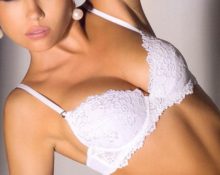 Malakhai, according to Dahl’s explanatory dictionary, is a massive oriental hat with ears covered in fluffy fur that cover the sides of the face, the back of the head and the forehead (photo). There is also another interpretation: the caftan is wide open without a belt.
Malakhai, according to Dahl’s explanatory dictionary, is a massive oriental hat with ears covered in fluffy fur that cover the sides of the face, the back of the head and the forehead (photo). There is also another interpretation: the caftan is wide open without a belt.
Fashion trends often look to the past to find forgotten elements that can be borrowed and updated for modern times. Initially, the malakhai was a rather wide caftan, which was not belted with anything. Its distant relative can be called the well-known cardigan. Such caftans were the highlight of women's and men's wardrobes.
Then the malakhai hat appeared, which, somewhat similar to caftans, has developing details that cover the ears. The meaning of the word has not changed since these things were popular, but is almost never used in modern interpretation.
Malachai hat
 The headdress, which is commonly called malakhai, is a universal and most comfortable item of clothing with “ears” that are easily connected to each other using special devices - ties under the chin.
The headdress, which is commonly called malakhai, is a universal and most comfortable item of clothing with “ears” that are easily connected to each other using special devices - ties under the chin.
The ears of the hat can be tied to the top of the head, and this makes it a lightweight option for wearing at not too low temperatures and in the absence of severe frosts.
REFERENCE! In modern times, the name “malachai” is not used or is very rare. The more common designation for this hat is “hat with earflaps,” which was very popular in the Soviet army and has been preserved as an unchanged attribute to the present day.
A little history
Malakhai in its usual sense appeared on the territory of modern Russia during the Mongol raids. Another option in the history of the appearance of the hat is considered to be “ablavukha,” which means a headdress, which at one time was popular in Belarus until the twentieth century. An interesting fact is that this headdress also had “ears” located in the front and also in the back. In severe frosts they could be lowered in order to keep warm, and in warmer times they could be tied on the top of the head.
In the 20th century, “treukhi” were quite popular in Russia. These hats were quite reminiscent of malachai and were an invariable attribute of coachmen. Such a headdress reliably covered the back of the head and cheeks of the owner. And this was a very important factor in keeping us warm in severe frosts.
This headdress gained immediate popularity during the Civil War of 1919 and since then has been present in the wardrobes of every man. In the 70s of the last century, a variation of this model appeared with the “fake” ears of the malachai raised exclusively to the top of the head.This model was more economical, but did not provide for any variation in wearing.
REFERENCE! For quite a long period of time, this headdress was part of the compulsory military uniform and was made of sheep wool. Aviation pilots had malachai made of leather, and polar military specialists wore large fluffy hats made of wolf or dog fur.
Malachai in our time
 Modern designers very often use antique items as inspiration for new collections. In modern times, everyone wears malachai: children, teenagers, women and men. They are often made from sable fur, sometimes complemented with pom-poms on the ears. Such interesting variations fit perfectly into different clothing styles: sporty and casual. The thing looks interesting if you tie its “ears” at the back of the head and will be called a ski one, since the athlete in such a headdress has a free viewing angle and, moreover, fits quite tightly to the head.
Modern designers very often use antique items as inspiration for new collections. In modern times, everyone wears malachai: children, teenagers, women and men. They are often made from sable fur, sometimes complemented with pom-poms on the ears. Such interesting variations fit perfectly into different clothing styles: sporty and casual. The thing looks interesting if you tie its “ears” at the back of the head and will be called a ski one, since the athlete in such a headdress has a free viewing angle and, moreover, fits quite tightly to the head.
Another interesting version of the malachai headdress in modern times is a knitted hat with an interesting ornament. It goes well with short jackets and skinny jeans. In addition, it looks quite bright and reckless.
More recently, fashion designers have prepared an interesting model of a hat with earflaps for the German police. This news caused a stir on the Internet, as many outrages concerned the fact that wearing the uniform headdress of the Soviet army was disrespectful to history.
Thus, the long-known malachai headdress allows you to complement your image with a bright and warm wardrobe element.


 1
1





